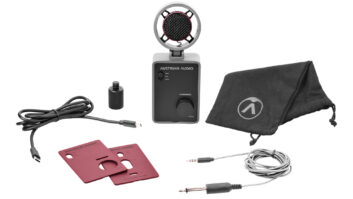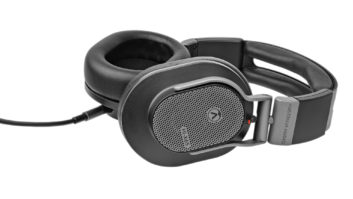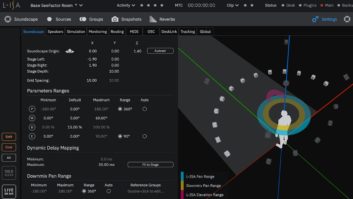
| MIX VERDICT: AUSTRIAN AUDIO MICREATOR STUDIO |
| THE TAKEAWAY: “Between its impressive sonics, handy features, expandability options and reasonable price, MiCreator Studio sets a high bar in the world of USB mics.” |
| COMPANY: Austrian Audio • www.austrian.audio PRICE: $199 PROS: • Excellent sound quality for the price. • Versatile I/O. • Functions as USB-C audio interface with headphone output and direct monitoring feature. • Second input records to separate track. • Built-in shock mount. CONS: • Only two input-gain level settings. |
New York (August 22, 2024)—Austrian Audio’s MiCreator Studio is more than just a USB-C microphone. It’s also an audio interface with two inputs, surprisingly good sound quality for the money, and plenty of useful features for recording music and spoken-word audio. It’s compatible with various devices, including Mac, Windows and Linux computers, iOS and Android tablets and phones, and more.
The solidly built cardioid electret condenser mic, which can handle up to 24-bit/48 kHz recording, features a relatively thick rectangular body with an attached, tilting head that holds the mic capsule suspended in its own shockmount. The head tilts to about 45 degrees in either direction, providing flexibility in placement.
On the front of the body is an input-gain switch with three settings: High, Low and Mute. On the back is a two-position switch (High and Low) for the second input. Neither input has a gain knob, which is somewhat limiting when you’re recording.
The body has rubber feet at the bottom and is designed to sit on a tabletop without a stand, which is convenient when you don’t have a mic stand handy. However, when set up like that, you have to be careful not to yank the headphone cable accidentally, or you could knock the unit over. In the box, you get a stand adaptor that screws into the bottom of the mic.
All connections are on the back. They include a USB-C jack, from which the unit gets power, a TRS headphone output and a TRRS jack labeled In/ Out. The latter can function as a second TRS headphone output or as a second input that records to a separate track. A TRRS-to-¼-inch cable for accessing that input is included.
One example of how the second input could be handy is when quickly recording a songwriter demo. Plug in the pickup of an acoustic guitar—or the output of a keyboard—through the TRRS jack and record the instrument while singing through the mic. Each part will be recorded on a separate track. (The mic will pick up bleed from any sound the instrument makes in the room, of course, so the vocal track won’t be completely discrete.)
The second input also supports MiCreator Satellite and MiCreator Lav, two optional accessories. The former is a matching microphone that facilitates stereo recordings, while the latter is a lavalier mic. Both include their own headphone jack.
A large front-panel knob serves several purposes. When the indicator light shows green—its default state—it controls the headphone level. Press and release the knob, and the light turns red, indicating that it now governs the balance between direct monitoring and computer playback in the headphone mix—an essential feature for overdubbing. If the second input is in use, the jog wheel controls the headphone balance of the two incoming signals.
I tested the mic out on a variety of sources, recording vocals (sung and spoken word), acoustic guitar, resonator guitar and mandolin, and got clear and accurate results that would rival mics costing two or three times as much.
With its dual capability as an audio interface, MiCreator Studio makes for a clean-sounding, portable front end for a mobile studio in conjunction with a laptop or mobile device. It’s sure to be popular with podcasters, people shooting YouTube or TikTok videos from their phones, and others creating online content. It offers a significant improvement in quality compared to a mobile device’s builtin mic.
Between its impressive sonics, handy features, expandability options and reasonable price, MiCreator Studio sets a high bar in the world of USB mics.








